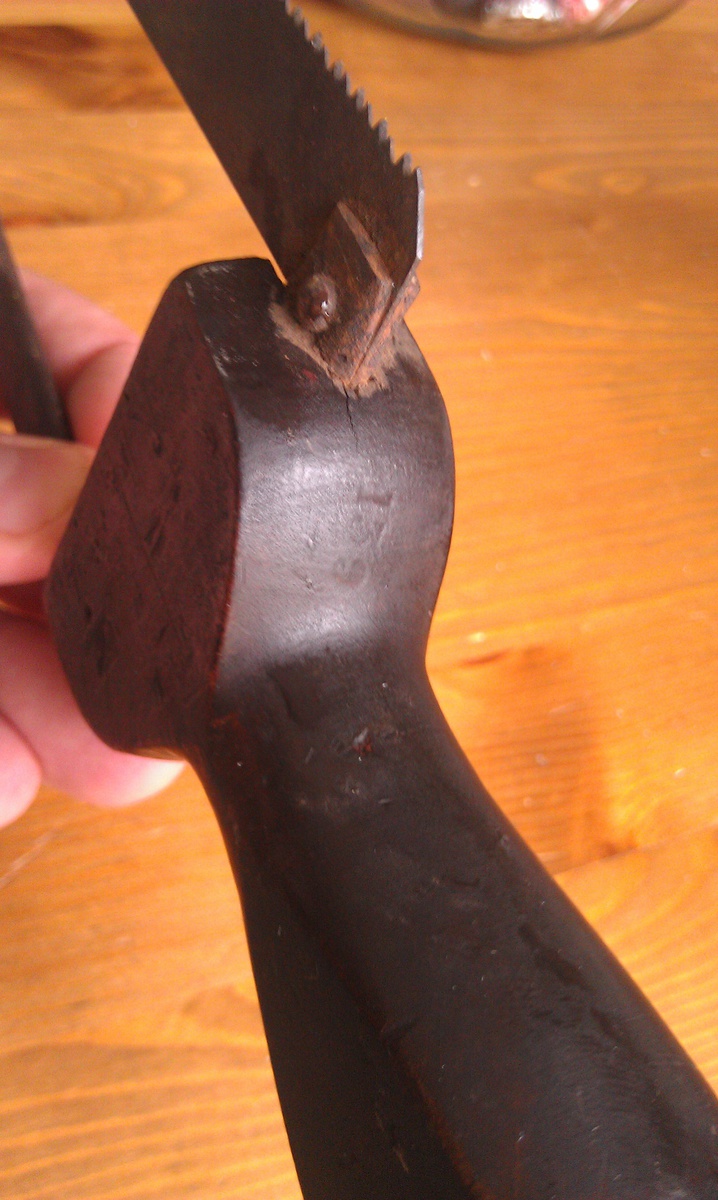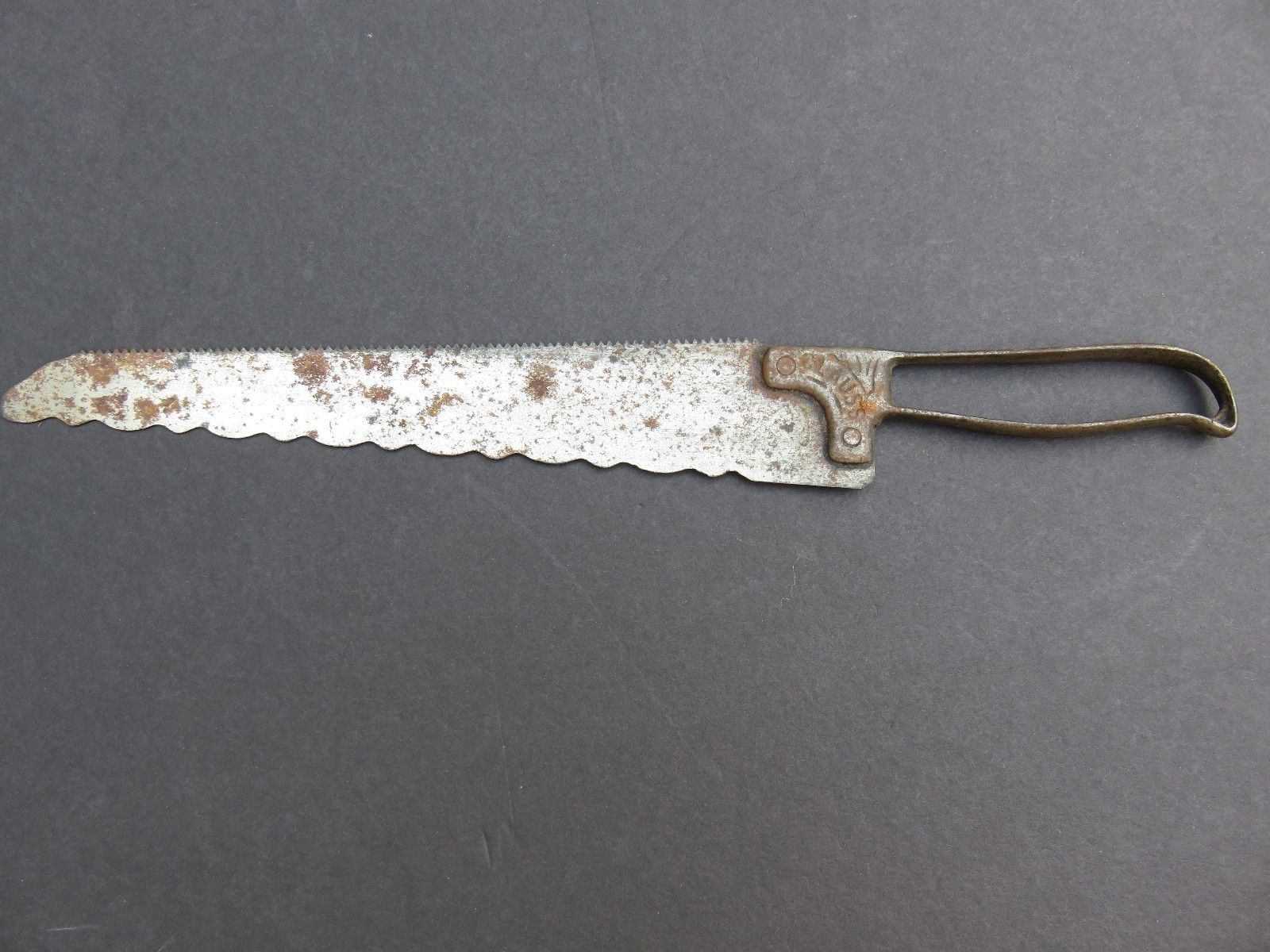
Rare Civil War Era Old Antique H & C DISSTON Surgeon Amputation Bone
Civil War Bone Saw Provided by: Tennessee State Library and Archives Civil War surgeons used such a tool for amputating limbs after soldiers suffered combat wounds.

Antique Civil War Era Amputation Bone Saw by Routledge Civil war era
THE BONE SAW: History of key surgeon's tool. The first metallic bone saw blades were introduced about 3500 BC using copper. Stronger iron and steel-facing blades came along with the developments of iron and steel working processes around 1400 BC and 1200 BC. By 1750 BC, blades were finally strong enough to cut a straight line through a bone.

Sold Price CIVIL WAR ERA SURGICAL BONE SAW January 6, 0117 1000 AM EST
Newly Unearthed Civil War Bones Speak Silently to the Grim Aftermath of Battle. What the amputated limbs and full skeletons of a Manassas burial pit tell us about wartime surgical practices

Bone Saws Civil War Era on Behance
During the American Civil War (1861-1865), most surgeons considered excising segments of fractured bone a limb-salvaging alternative to amputation. The hand-held chain saw, however, removed bone.

Bone Saws Civil War Era on Behance
The surgeon then picked up a bone saw (the tool which helped create the Civil War slang for surgeons known as "Sawbones") and sawed through the bone until it was severed. The limb was then discarded, and the surgeon tied off the arteries with either horsehair, silk, cotton, or metal threads.

Antique Civil War Era Amputation Bone Saw by Routledge Civil war
American Civil War: Relations: William Satterlee: Richard Sherwood Satterlee. he oversaw the introduction of the Satterlee bone saw, used for amputations, which had a "pistol grip." This saw is still in use. During the war he was brevetted a Brigadier General and was a candidate for the command of the Medical Corps following the dismissal of.

Antique Civil War Jackson Amputation Bone Saw Collectors Weekly
What Whitman saw in Virginia was a common sight at Civil War hospitals. If a soldier had been struck in the arm or leg, the bullet tended to shatter the bone, creating horrendous wounds. The wounds were certain to become infected, and often the only way to save the patient's life was to amputate the limb.

Image result for capital bone saw, instrument of civil war surgery
A typical surgeon's kit from the Civil War included various saws for amputations.. starting slowly to set the saw teeth, then quickly through the bone, then slowly on the way out to avoid exit.

Sold Price CIVIL WAR ERA BONE SAW May 6, 0119 1000 AM EDT
Winter 2015, Vol. 47, No. 4 | Pieces of History Enlarge Top to bottom: a petit tourniquet, a bone saw, two amputation knives, and a catlin. Left to right: a pair of dressing forceps, a tenaculum, and a catheter. (Records of the American National Red Cross) View in National Archives Catalog The National Archives holds a tremendous amount of records from the Civil War—from battlefield and.

Antique Civil War Signed Clauss Medical Doctor Instrument Amputation
The surgeon took a bone saw (the tool that coined the term "surgeon" for surgeons known as Sawbones) and sawed through the bone until it was cut off.. The Civil War included the use of capital saws, rongeurs, tourniquets, trephines, two knives, four pairs of tweezers, directors, lancets, and Hey's saws. When one of three conditions.

Bone Saws Civil War Era on Behance
The author's ancestor, Elisha Jones, survived a crippling wound to the hand during the Civil War. Amputation was simpler. After a circular cut was made completely around the limb, the bone was sawed through, and the blood vessels and arteries sewn shut. To prevent future pain, nerves were pulled out as far as possible with forceps, cut and.

Sold Price CIVIL WAR ERA SURGICAL BONE SAW January 6, 0117 1000 AM EST
Bone Saws from Civil War Amputation Kit. A skilful surgeon, (observes Petit,) may obviate the difficulty by supporting the part with his left hand, and resisting or yielding at seasonable opportunities to such circumstances as impede the motion of the instrument. But, the difficulty may depend upon the saw itself, when its blade is not duly.

Antique H&C Disston Surgical Civil War Era Medical Doctors Bone Saw
The saw, marketed by Tiemann as "Pfarre's Amputating Saw" in 1872 [ 5 ], was described as "Satterlee's Capital Saw" 5 years later [ 4 ], suggesting that the latter was already colloquial. Fig. 1A-B. (A) The Satterlee Capital Saw manufactured by George Tiemann & Co. of New York during the Civil War is remarkably similar to (B) the.

Sold Price CIVIL WAR ERA BONE SAW May 6, 0119 1000 AM EDT
Civil War Surgical Tools - The Civil War, which left over 600,000 dead, was the bloodiest war in the history of the United States.. -grasping forceps, long, sharp Liston knives for slicing through muscle, surgical razors, perforated-edge, bone-cutting saws, and bone brushes, used to clear bone dust from amputation sites. Some also included.

Antique Civil War Jackson Amputation Bone Saw Collectors Weekly
Civil War Set Amputation Saws Dating American antique surgical bone saws by comparative anatomy. By Dr. Michael Echols. Sometimes it is difficult to peg the date of a given Civil War medicine saw, but if it is in the context of a surgical set, with a maker label, and other instruments, (especially the blade and handles of the knives), it helps with the decision.

Civil War Era Bone Amputation Saw Antique Surgeon's Early Etsy
Surgical Chain Saw. This chain saw, a popular surgical instrument during the Civil War, features a steel blade that is jointed in such a way that it allowed a surgeon to reach behind a bone and remove a section of it without damaging nearby soft tissue. This type of surgery saved arms and legs that had been wounded in battle, but did not.